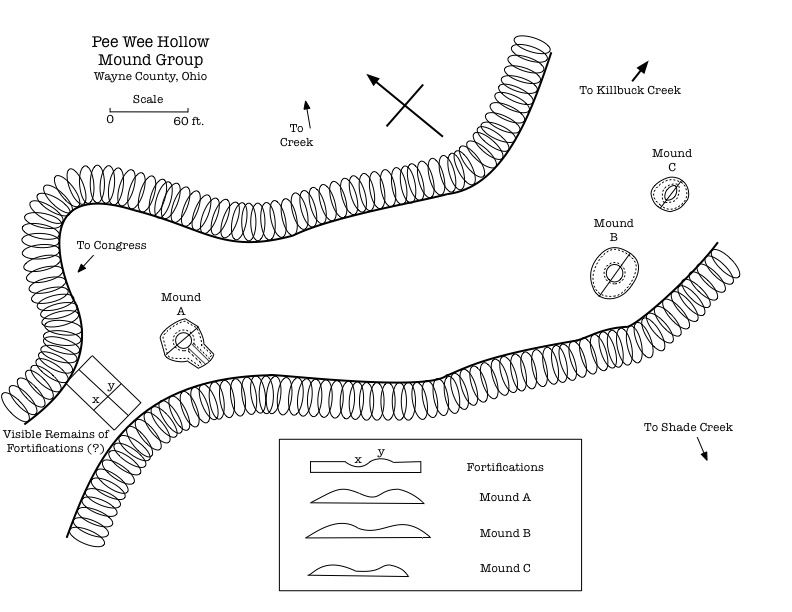Ten miles north of Wooster at the Pee Wee Hollow campsite there is a cluster of indigenous-built mounds, all of which are about 30 feet in diameter. 1Kardulias, et al, 65 Evidenced by a small dimple on the top of some of the mounds, the earliest excavation of these mounds, in search of valuable artifacts, took place in the 19th century. However, there is no record of what these raiders found. Then, they were excavated by David Taggart and Robert Wheeler in 1956 and 1957, and then by Dr. Kardulias and Dr. Wiles of the College of Wooster in 2014-2015. 2Finn, 2014 The staff at the College of Wooster were able to bring more clarity as to the age and purpose of the mounds, which were still in speculation in the 1950s. Kardulias and Wiles determined through carbon dating that the mounds were from around 2040-1900 BC, but also that the mounds were constructed at least 260 years apart. Taggart and Wheeler had suspected that there were human remains in the mounds, but Kardulias and Wiles found no evidence of such. They did however find large amounts of charcoal, fire-burnt stones, and arrowheads, suggesting that some sort of toolmaking took place. 3Kardulias, et al, 66-68
For Further Reading:
Kardulias, Nick, David Taggart, Brittany Rancour, Nigel Brush, Roger Rowe, and Gregory Wiles. “A Small Prehistoric Mound Group (33-WE-3) In Wayne County, Northeast Ohio.” Pennsylvania Archeologist 84 (2014): 62–75.
Finn, John. “Interdisciplinary Collaboration Sheds New Light on the Mounds of Pee Wee Hollow.” The College of Wooter, February 28, 2014. https://www.wooster.edu/offices/marketing/news-archive/2014/february/peeweehollow-mounds/index.php.
